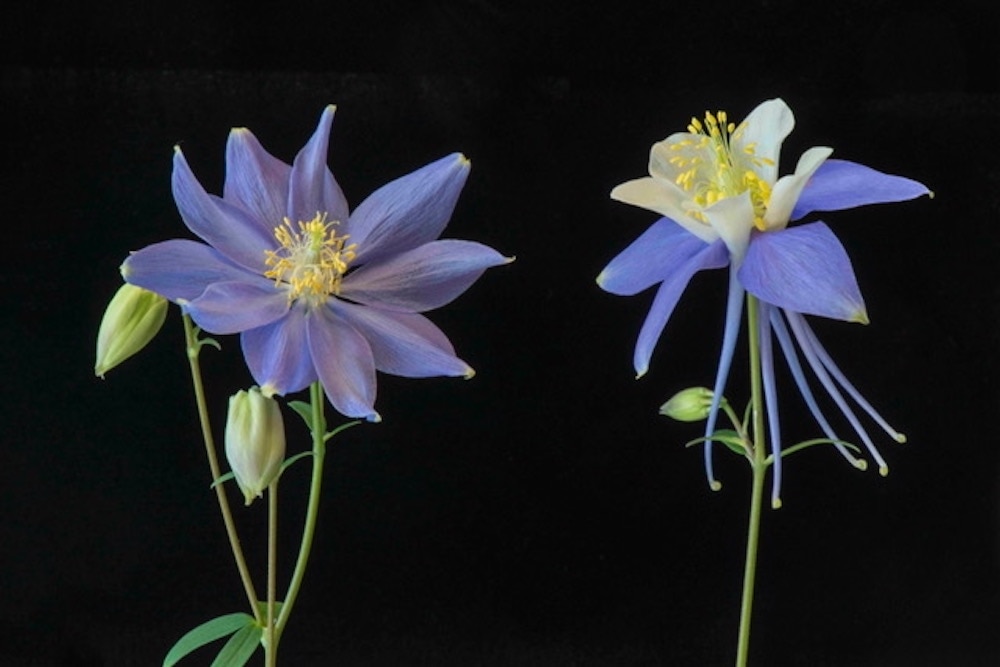Create a free profile to get unlimited access to exclusive videos, sweepstakes, and more!
These flowers put the petal to the metal for rapid evolution
Sometimes fast travel evolution is terrifying, sometimes it's beautiful.

Evolution happens slowly. Small changes, mutations in a gene here and there, stack up over time until eventually the descendants of an animal resemble their ancestors less and less. A new species emerges by degrees, linked by an unending chain of minute variations over thousands or millions of years. It’s not the sort of thing you notice from one generation to the next, or even something you’re likely to see across a human lifetime.
At least that’s how it works most of the time.
Sometimes, if things go just right, evolution can happen fast. Like, right before our eyes. That’s the situation with an otherwise unassuming flower in Reynold’s Park, Colorado. Zachary Cabin and Scott Hodges, both from the Department of Ecology, Evolution, and Marine Biology at the University of California, Santa Barbara, and colleagues, described an incident of what appears to be rapid onset evolution in Colorado columbines. Their findings were published in the journal Current Biology.
Colorado columbines are brightly colored flowers known for their petals and nectar spurs. In fact, those traits are so central to what it means to be a columbine that they are often considered a defining feature of the genus. Which is why it was so surprising to find a mutant population at Reynold’s Park which had lost both the petals and nectar spurs. Moreover, genetic analysis of the plants suggests the change is a result of a mutation in a single gene.
“In order to have a single gene make such a big change like this, it has to be a gene that’s affecting organ development really early on,” Cabin told SYFY WIRE. “A really small change can have a huge cascading effect.”
The gene in question is known as APETALA3-3 and it’s capable of having such a marked impact on the morphology of columbines because of its role in the flower’s development. APETALA3-3 is a transcription factor, responsible for turning other genes on and off.
In flowers, the petals and nectar spurs are an entire organ structure, and the development of that organ is initiated by a single genetic switch early in the organism’s development. The mutation observed in this flower population turns that switch off.
“The job of a transcription factor is to turn other genes on or off, that’s how it has this big cascading effect,” Hodges said. “It controls a whole bunch of other genes and some of those genes may control other genes as well. So, you get this really large effect by changing a key gene at the point in development when an organ is figuring out what it’s going to be.”
This type of genetic change is known as a homeotic mutation and their presence in plants and animals has been known for a long time. More often than not, however, drastic changes in the formation of organs lead to detrimental or fatal morphological shifts. A similar mutation in flies, for instance, results in legs growing from the head in place of antennae. Generally speaking, when body parts grow where they aren’t meant to be, it doesn’t go well for an individual’s survival.
In the case of columbines, this mutation has been known for at least 120 years, but it largely popped up in individuals, probably as a result of genetic drift, before disappearing. Now, the mutation exists in about a quarter of the flowers located in this particular area, suggesting something deeper is going on.
Typically, changes in petal or nectar formation are driven by pollinator interactions, so that’s where scientists first looked. Surprisingly, they found no preference among bees or hawkmoths for one morph or another. Instead, evolutionary pressure appears to be driven by herbivorous predation. The team looked at caterpillars, aphids, and deer in search of a dietary preference which might be driving the success of mutant flowers.
“Caterpillars don’t seem to show a huge preference of morphology, but aphids and deer really prefer wild-type,” Cabin said.
In this case, the lack of petals and nectar spurs is making the flowers less appetizing to some of their primary consumers and consumption is happening early in the flowering stage before they’ve had a chance to effectively disperse pollen or seeds. As a result, the mutants are outliving their more common predecessors.
It provides pretty solid evidence that sometimes natural selection conspires, through a combination of random mutations and natural pressures, to produce an organism which is drastically different from one generation to the next.
That’s pretty impressive for a single gene. We’re just glad evolution is using its powers to create new flowers instead of growing legs out of our foreheads.


























